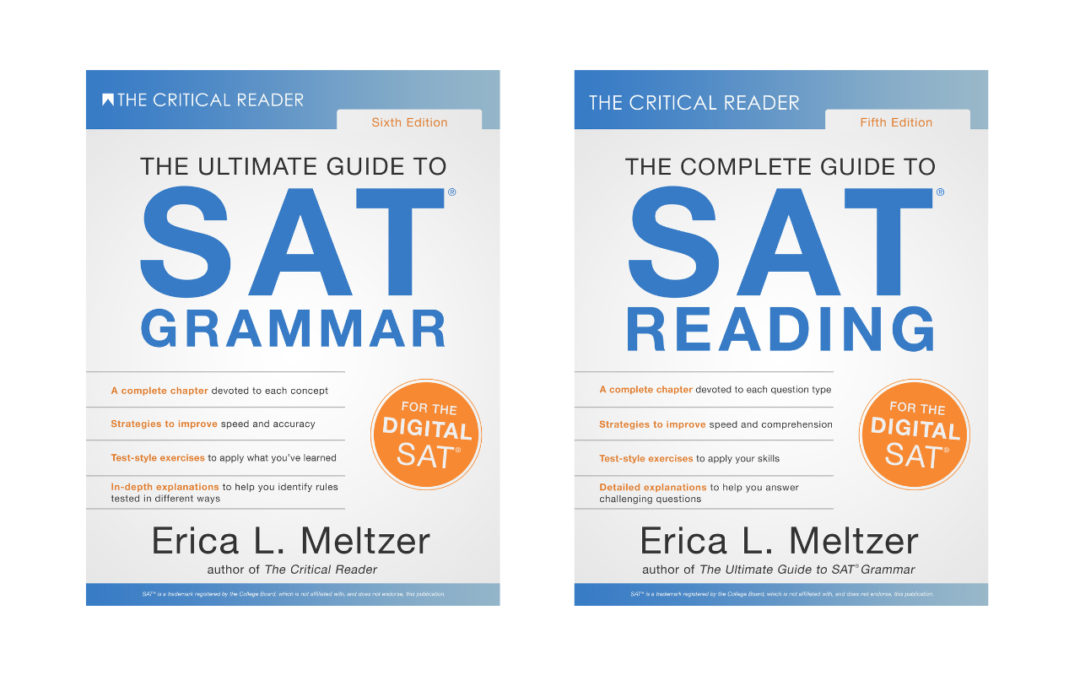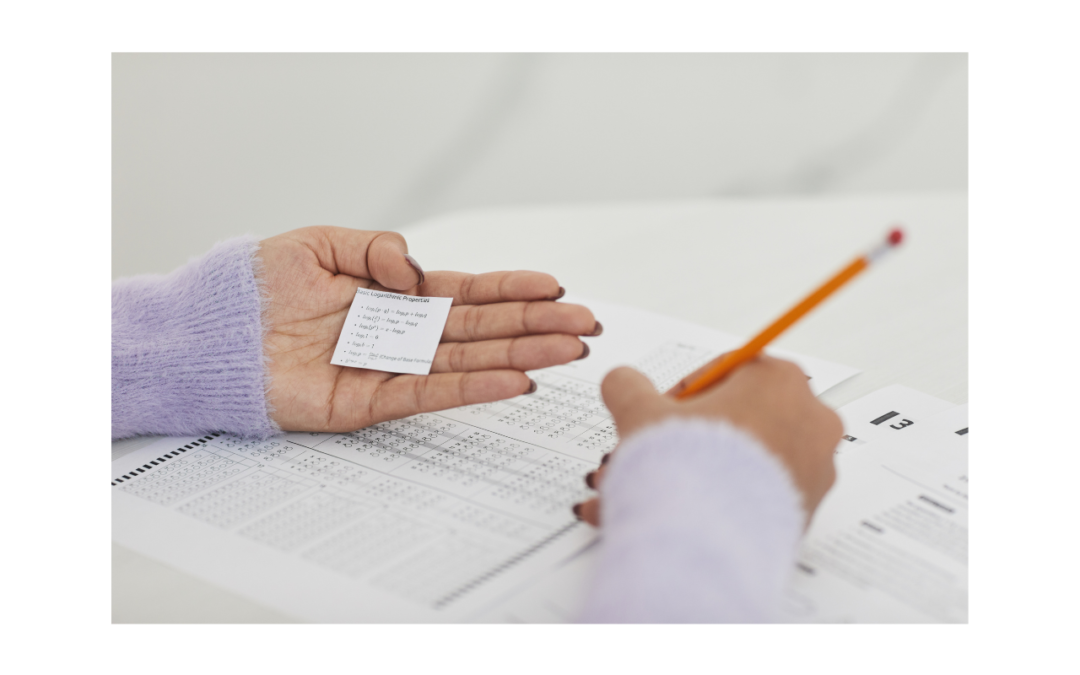
by Erica L. Meltzer | Mar 3, 2023 | The Digital SAT
Of all the pieces of advice I have for the Writing portion of the digital SAT, this is probably my #1, and it’s particularly important because it involves a new question type.
Whereas the paper-based post-2016 exam featured ACT knock-off “rhetoric” questions asking test-takers whether a given piece of information should be revised, added to, or deleted from a passage, the digital version has scrapped these items and replaced them with a much more complicated-looking type of question involving sets of bullet points representing notes that a “student” has taken about a topic.
Based on the material released by the College Board, it appears that this will be a very common question type: second in frequency only to questions involving transitional words and phrases, and potentially appearing as many as four or five times in a given module.
After working through a few of these questions, bouncing back and forth between the bullet-pointed information and the answer choices, occasionally losing track of exactly what I was supposed to be looking for and getting lost in a thicket of information, I had a classic “duh” moment: the questions themselves told me what type of information the correct answer had to contain—it was unnecessary to even look at the bullet points at all. (more…)

by Erica L. Meltzer | Feb 12, 2023 | Grammar (SAT & ACT), The Digital SAT
Note: The strategies covered in this post can also be applied to the paper-based. Just cover up the transition that is already in the passage; otherwise, the steps are basically the same.
On many versions of the digital SAT, you can expect to encounter about five questions per module testing transitional words and phrases, making this the most common question type on the Writing portion of the test. To ensure you earn what are usually fairly easy points, it is crucial to have an understanding of how to work through these questions before you walk into the exam.
The most important thing is to avoid getting caught up in the details—questions are designed not so much to test particular words as they are to test three main categories of relationships, namely continuation, cause-and-effect, and contrast.
As a result, the fact that therefore might appear in one set of answers, whereas a second might contain thus and a third hence is effectively irrelevant. These words serve the same rhetorical purpose—to indicate a result in a cause-and-effect relationship—and it is the relationship that is really being tested. The words themselves are secondary.
1) Read the question but not the answer choices
A quick glance at the question will tell you that it is testing transitions.
If you happen to notice that the answers consist of, say, However, Moreover, Specifically, and Therefore, that’s obviously a sign as well, but initially you should not worry about the specific words involved. In fact, you should do your best to ignore them because they are more likely to confuse you than to help. (more…)

by Erica L. Meltzer | Jan 29, 2023 | Books, The Digital SAT
I am happy to announce that the preliminary versions of The Ultimate Guide to SAT Grammar, Sixth Edition, and The Critical Reader, Fifth Edition are now available for international students preparing for the new digital SAT in March, as well as tutors working with International students and any U.S. students taking the digital school day SAT this spring.
If you live outside the United States and unable to order from Amazon locally, you can order directly through The Critical Reader. Students located in South Korea will be able to purchase books through our Korean distributor, JMK Education. As of 1/29/23, we are in the process of arranging to have an order shipped to them.
Both books have retained their core components but have been fully reworked to reflect the content and format of the digital SAT. While it is possible that there will eventually be some minor reshuffling of content (particularly in the grammar book, since it’s not entirely clear whether certain concepts will tested on the digital exam), I hesitate to call them beta versions because the bulk of the material is effectively final. The only major changes planned at this point are the additional of end-of-chapter practice questions/explanations in the reading book, and full explanations for end-of-chapter exercises in the grammar book.
In order to make the books available on the various international Amazon sites, there was no choice to publish to the main U.S. site as well—so yes, the books are technically available there now. However, I am aiming to release the expanded versions of both books by April, so you may want to wait to purchase them if you are planning to take the digital exam in June or later and do not need to start studying urgently.
Ensuring that the new editions matched the level of quality of the previous editions while getting them to publication in only a few months has been an enormously challenging process, and again, I very much appreciate everyone’s patience while I worked out all the unforeseen (but inevitable) last-minute kinks.
Note: comments on this post have been closed. If you have a question regarding book orders, please send us a message via the contact form, or email thecriticalreader1@gmail.com.

by Erica L. Meltzer | Jan 3, 2023 | Grammar (SAT & ACT), The Digital SAT
For those of you taking the digital SAT in March, I’ve made a new version of my free Writing cheat sheet available for download.
Although the core content of the digital Writing test is similar to that of the current paper-based version, there are a few key differences—most notably, the extremely high emphasis on transitional words and phrases; the introduction of student “notes” questions; and the elimination of diction/register questions—and the sheet has been updated to reflect these changes.
As I mentioned, it may take me a few more weeks to get the reading and writing books on international Amazon, but in the meantime, I’ll try to put up a few posts on the most important features of the digital exam.
by Erica L. Meltzer | Dec 1, 2022 | Blog, Books, The Digital SAT
I apologize for the delay and appreciate everyone’s patience. This is the fastest I have ever had to revise such a huge quantity of material (there was no way for me to begin serious work on the updates until the College Board released the first full digital practice test at the beginning of October). And because I am an actual person who sometimes has to deal with life beyond test preparation, I needed to take a break for a couple of weeks during the holidays.
Happy New Year, congratulations to everyone who got done with testing or into college, and wishing you a good 2023.
-EM
Update 12/1: As of the beginning of December 2022, I have completed drafts of new editions of The Ultimate Guide to SAT Grammar (6th edition) and The Critical Reader (5th edition).
While the books retain many key elements, they have been substantially overhauled and are now fully aligned with the digital exam—based on the four practice tests released by the College Board—and will be available for purchase for international test-takers in some capacity by late December or January 2023.
Both books will be in something very close to their final form; the only major difference will be in the number of exercises (particularly in certain chapters of the Reading book) and the presence of detailed explanations for every question in the end-of-chapter exercises, which are likely to be too time-consuming to produce in full for both books by the end of the year.
Also, full disclosure: there will only be time for the books to undergo one round of proofing, so there may be a few lingering typos (this is the unfortunate price for getting them out so quickly).
Otherwise, as in previous editions, each guide contains a full chapter devoted to each question type; numerous worked, in-chapter examples with step-by-step explanations; and numerous strategies for simplifying questions and zeroing in on key information.
I’ve worked incredibly hard on the revisions over the last couple of months, and I feel confident that they will provide thorough preparation for students taking the digital test in March.
I expect finalized versions that have detailed explanations for the end-of-chapter exercises and that have undergone multiple rounds of proofing to be available sometime in the spring of 2023. Current sophomores who are preparing for the digital PSAT next fall should have plenty of time to work with them over the summer.
I appreciate everyone’s patience and will be posting previews of both books as soon as possible.

by Erica L. Meltzer | Sep 30, 2022 | Blog, The Digital SAT
I apologize for not having posted an update sooner, but I’v had an unusual number of projects to juggle over the last several months and have only been able to begin serious work on the updated SAT books in the last few weeks. I understand, however, that everyone is very anxious for information regarding the new exam as well as eager to work out a prep plan, and that the earlier international rollout of the digital test has made things challenging for current eleventh graders living outside the U.S. So I’ll do my best here to outline my own timeline regarding book releases here and to provide some interim options for prep materials.
First, the basics. Yes, I will revising my SAT reading and grammar books to reflect the content and structure of the digital test. They updated versions will be completely new editions: 5th edition of The Critical Reader, 6th edition of The Ultimate Guide to SAT Grammar.
The essential content and structure of the books will not change, although they will likely be somewhat slimmed down to reflect the shorter, more focused digital reading and writing sections (two sections, 27 questions each, with performance on the first section determining the difficulty of the questions seen on the second). (more…)




